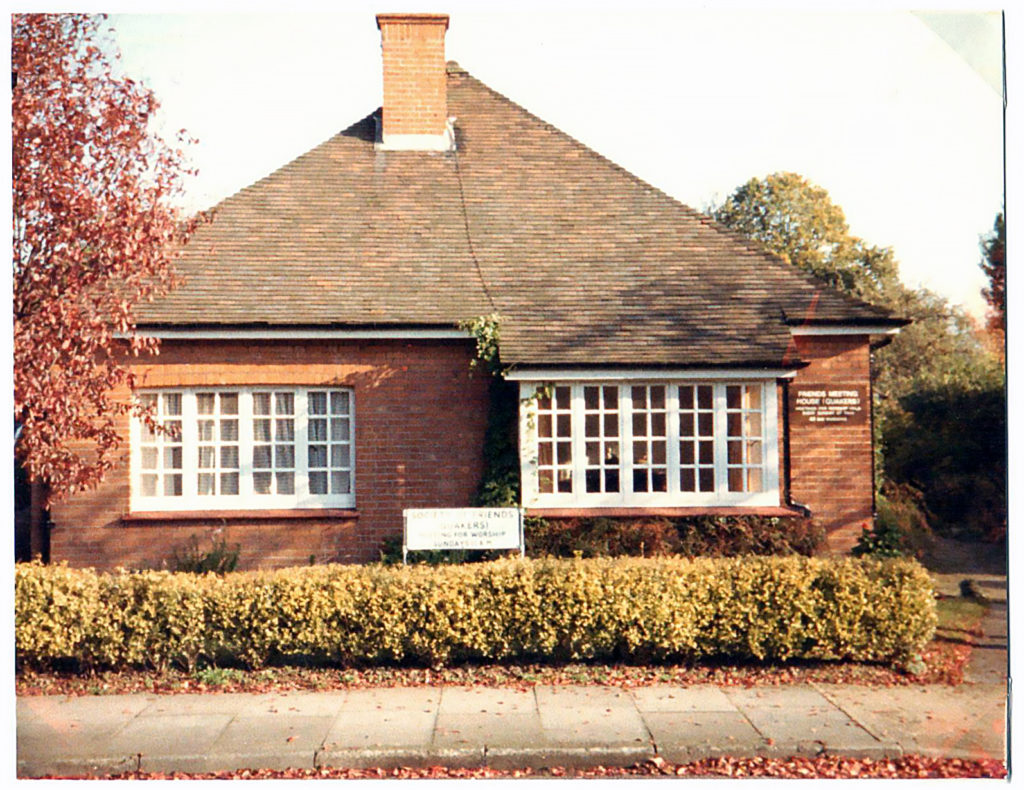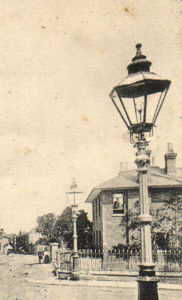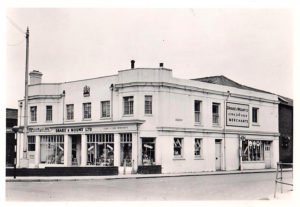Just Williams Part 4 – some of the Victorian tradesmen who shaped Egham High Street
Margaret C Stewart
Over the last few years we have seen many of the businesses in Egham High Street close – and welcomed new ones. Even without a pandemic these frequent changes are not unusual but it is always pleasing to see how some businesses stay for years, often under family management. This short series of articles looks at some of the businesses which began trading in Egham during the Victorian era and continued for over 50 years. What they have in common is that they were all begun by men called William…
4. William Paice, corn merchant 168 High Street.
Henry Charles Paice, the son of a farmer also called Henry, had come from Newnham Hants. By 1841 he was established in the High Street as a corn chandler, having obtained the copyhold[i] of Aubrey Haw, a large residence and garden at 168 High Street. In 1844 he married Eliza Kent from Staines and they went on to have 10 children. Sadly five of these children – Charles, Marianne, Emily, Rosa and George – did not survive beyond their teenage years.
According to the Egham Rate books there was also a Henry Paice, a grocer, at 140 High Street from 1851-1863. It is not clear if this was the same Henry Paice, diversifying his interests, or a different man of the same name.
Most of the corn business was centred on offices and a yard on the east corner of the High Street and Station Road, which also used the address 168 High Street.
Henry was later joined in this enterprise by his fifth child and oldest surviving son, William Paice, who married Fanny Amelia Teetgen in 1874. While continuing to work alongside his father, he amassed enough funds to buy a piece of meadowland – Gaston’s Mead, Egham – and by 1877, The Limes, a large house with grounds and an orchard, further up the High Street at No 185.
The sixth child, another Henry Charles but usually called Charles, became a maltster[ii], working in Kingston and later in Woking. The seventh son, Arthur took holy orders and worked as a clergyman in Staffordshire. Daughters Maria[iii] and Emmeline married and, following usual Victorian custom, accompanied their husbands when they moved out of the area.
Henry Senior died in 1883 and left his business worth £7842 (£1,126,909.46 today!) in William’s hands. It continued to prosper and by 1890 William had achieved Royal Warrants as supplier of corn to Queen Victoria and the Prince of Wales. He invested in more High Street properties to lease out, including 180 and 184 (Walnut Tree Cottage).
William and Fanny had seven children: Charles, William, Arnold, Fanny, Muriel, and twins Norman and Harold.
- Charles joined his father’s business and was to stay in Egham, with his own wife and family, for the rest of his life, first at 24 Grange Road and later in a bungalow he built for himself at 9 Limes Road (probably in the 1920s) – now the Friends’ Meeting House.

- William Junior trained as an architect and became the land agent for the Wentworth Estate.
- Arnold sat law exams in 1896 but in 1900 he enlisted in the Imperial Yeomanry to serve in the 2nd Boer War in South Africa. In 1901 he was invalided out after being injured at Frobisher Bay. He returned to live with his parents until 1902. There are no clear records of his life thereafter until he sailed on the Watussi to Kenya as a farmer in 1932: he died in Kenya in 1963.
- Norman became an analytical chemist and moved first to Lancashire and then Bromley in Kent.
- Harold worked for his father as a corn merchant’s assistant until his untimely death aged just 19 or 20 in 1903/4.
- Fanny and Muriel spent several years living with their father’s brother-in-law in Margate. Fanny then married a solicitor and moved to Farnborough. After moving back to live with her parents, Muriel was to become one of the secretaries of the Egham branch of the National League for Opposing Woman Suffrage.
William Paice’s widowed mother Eliza Paice stayed at Aubrey Haw until her death in 1903. After this, the house, now entirely separate from the business, became home to a succession of dentists and other professional men.
In October 1884 William obtained an agreement with the London and South Western Railway to provide a railway siding from the station goods yard to his granary, across School Lane and Church Road through an orchard where the Old Post Office stands in Station Road. It appears on the Ordnance survey maps of 1896 and 1914. However minutes of the Engineering Committee of the LSWR indicate that it was no longer in use by 1922 so the connection to it could be removed. According to Ron Davis[iv], trucks using the line, which ran for about 40 yards to the corn & seed merchants, were horse-hauled.

In 1905 William joined with Drake & Mount, a larger company who had kept smaller premises in Egham since 1903 at 91 High Street and owned other sites in Virginia Water and Sunningdale.

After William Paice retired in the 1920s, Drake & Mount earned the Royal Warrant in their own right.
William moved to a house called Homefield, in Send, Guildford, with his wife and their unmarried son, William Junior, and daughter, Muriel. This was the home address given by Arnold Paice when he sailed to Kenya in 1932.
William Paice died in 1934 and Fanny in 1939. William Jr and Muriel continued to live in Homefield until William Jr’s death in 1947.
The Limes was knocked down in 1963 and replaced at No 185 by the Egham Youth and Community Centre.
Aubrey Haw gave way to shops and offices in 1962: the site is now home to two unlet shops between Caffé Gondola, the new number 168[v], and Budgens.
Drake and Mount continued as a Corn, Seed and Coal Merchants until 1960: the building was demolished in 1961 and the site is today the location of Budgens supermarket.
General sources: Egham Museum photograph and document collections (including ratebooks),
https://www.ancestry.co.uk , https://www.findmypast.co.uk
[i] Copyhold was land held by a tenant of the manor.
[ii] a maker of malt for use in brewing or distilling
[iii] Maria and her husband Alfred Apperly gave one of their sons the magnificent name Arthur Lancelot!
[iv] Davis, Ron (1996) Railways from Staines to Sunningdale 1856-1996, Egham-by-Runnymede Historical Society
[v] No 168 High Street has had a confusing history. It was the site of Aubrey Haw and its grounds which, under the Paice family, included the corn warehouse on the corner of the High Street and Station Road. The Gem cinema was situated between Nos 168 and 167. When the cinema (latterly a car salesroom) was demolished in 1982, the new building which replaced it (now Caffe Gondola) was given the number 168 and the adjacent shops (once Oxfam and Totally Wicked) were 168c and 168d, with Budgens at 1-5 Station Road. Following the Gateway West development, Caffe Gondola is still 168 but the flats above it are 168a-d and the new empty shops between 168 and the recently refurbished Budgens on the corner of Magna Square do not yet seem to have been assigned numbers!




